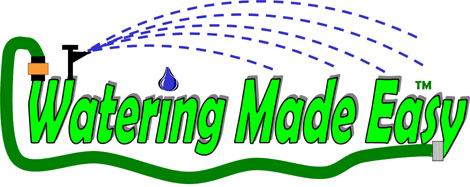Author: Al Haneson
With watering restrictions at an all time high across the United States, many consumers are trying to strike a balance between keeping their lawns green in the summer, and conserving the precious supply. Environmental concerns stretch far past pollution alone: conservation has become a major hot button in recent years as well
These lawn watering tips will help you find that happy medium.
Basic Considerations
1) Adjust sprinklers to water only grass areas. I cannot begin to tell you how many times I see homeowners with sprinklers that are throwing more water into the street than into the turf.
2) Mow grass to a height of 2 to 3 inches. Taller grass shades the roots and soil surface and helps reduce the amount of water lost to evaporation. When in doubt, raise your lawn mower wheels to the highest setting.
3) Use sprinklers that disperse large drops low to the ground vs. high and misty sprays.
4) Utilize quality water hoses with fittings that do not leak and waste water.
When to Water Your Turf
1) About one inch of water, twice per week (including rainfall) is adequate for maintaining a healthy lawn. Use a can or rain gauge to help determine the amount of water applied each time.
2) Water on a consistent basis in the summer. Keep your lawn on a schedule whenever possible.
3) A good soaking twice a week is better than watering lightly every day. Allowing the soil to dry between watering will allow the roots to grow to greater depths and help make turf more drought tolerant.
4) Water during the cool part of the day to minimize water lost to evaporation. Early morning hours prior to 9AM are the best. I tell folks to start their sprinklers when they get up for work (assuming they do not have an in-ground irrigation system), and shut them off on their way out the door. This usually means 1 solid hour has been utilized and equates to about an inch on the ground.
5) Avoid watering during midday hours when it is hot and sunny to prevent scalding the turf.
6) Watering at night is not recommended because the lawn stays wet for a long period in the night air which can bring disease and affect the health of your lawn.
When Watering Restrictions Hamper Your Irrigation
Township or city watering restrictions are sometimes imposed due to limited treatment capacity or reduced water supplies. Here are a few ideas in the event severe lawn watering restrictions are needed in your area.
1) Water less frequently, but gradually reduce the amount of water you give your lawn. This will help reduce stress and condition the turf if a complete ban on lawn watering becomes necessary.
2) Reduce the amount of foot traffic allowed on the lawn as much as possible. Let the kids play ball at the public park and not in your dried-out back lawn.
3) Allow the grass to grow longer to reduce moisture loss from the soil. You should also mulch your clippings so natural moisture is returned to the lawn.
Water conservation does not mean your lawn turns to straw, it just means you have to educate yourself and follow a few simple guidelines.
Article Source: http://www.articlesbase.com/landscaping-articles/lawn-irrigation-watering-restrictions-and-conservation-practices-471651.html
About the Author:
Al Haneson offers lawn tips about everything from Lawn Striping to Dog Urine Burning Lawns over at his blog, Life and Lawns.
